Search Results for 'Claddagh'
253 results found.
Claddagh School’s website proves big hit with global web browsers
The Claddagh National School’s website has enjoyed more than 3,600 hits from web users from more than 70 countries across the globe in its first year in existence.
East meets West in traditional music-thon
If you are a follower of traditional Irish music, then this is an event not to be missed. Brainchild of well-known local traditional musician Richard Murray, this will be the first such event of its kind in Galway. Richard has enlisted the support of his friends and colleagues along the western seaboard and beyond to run a charity event, playing traditional music continuously for one full day in Galway hostelry, Tí Coilí, on Mainguard Street. Starting at 11am on Saturday Feb 13 the event will run until close on that night.
Peter Greene’s pub
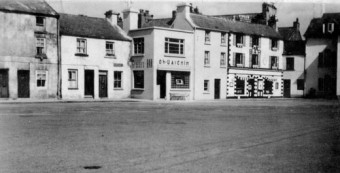
Towards the end of the 19th century Colman Greene came from Carna to Galway to work, mostly as a fisherman. He married Julia McGrath from Newcastle and they opened a pub near the Spanish Arch. They also sold tea and sugar and candles, etc, often as provisions to boatmen going out to fish. They had trawlers and fishing boats of their own at the Claddagh, and were fish merchants also.
Council calls for halt to unauthorised building at city school
An unauthorised extension to a local national school has been halted by Galway City Council after the planning permission on the site was questioned by a number of residents in the area.
Model boat display this weekend in the Claddagh
A special model boat display will be held in the Claddagh Basin on Saturday organised by Baidoiri an Cladaig - the Claddagh Community Boat Club.
The Spanish Arch, one hundred and seventy years ago
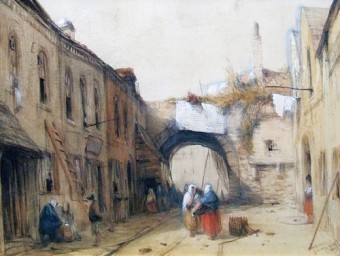
Antique paintings can be very important documents of social history, giving us an insight into what life must have been like when the picture was painted. They can recreate for us the streets and scenes and buildings where our ancestors may have lived or worked, show us how they dressed, the games they played, etc, before the Famine or before photography was invented. Such images of Galway are rare, so it is a pleasure to come across this descriptive watercolour of the back of the Spanish Arch, which is in a private collection.
A May procession in the Claddagh, c1935
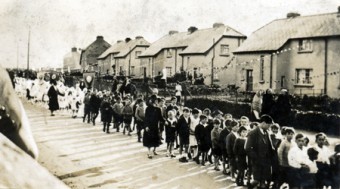
This photograph was originally taken from the top of the high wall which fronted the town dump in the area of the Claddagh still known as ‘The Swamp’ in 1931. In the early years of the 20th century Galway’s Parliamentary Representative Stephen Gwynn prompted the Government to award a grant of £450 for the reclamation of this marshy ground between the Claddagh and the seashore, which was prone to flooding, and as a result a half-mile racing track in the shape of a rectangle with rounded corners was built around the perimeter of the area. It cannot have been very successful, because some time afterwards the area became the site for the city dump. In 1931 the Carnegie Trust presented the city with a grant of £500 to help develop part of the site into a number of playing pitches. This development was a gradual process and eventually, in the early fifties, the whole area was converted into a municipal park devoted entirely to sporting activities. The high wall was largely knocked and reduced to its present height. It took a while to completely clear the ground... many who played matches there at the time remember taking lumps of glass or tin out of the surface of the playing pitch and leaving them on the side wall.
New project seeks to preserve and promote Galway’s maritime heritage
The last six boats of the Claddagh fleet are to be restored to working order in time for the Volvo Ocean Boat Race, as part of a new project which seeks to preserve and promote Galway’s maritime heritage.
Renmore and Claddagh win Pride of Place awards
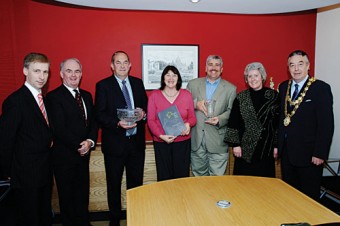
The Renmore Residents Association and the Claddagh Residents Association won awards at the 2008 Pride of Place Awards Ceremony.
The Claddagh — the old and the new
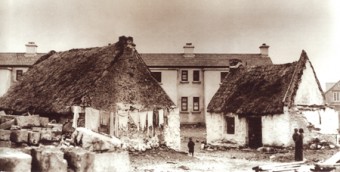
This photograph was taken in the 1930s and illustrates the huge difference between the old thatched cottages in the Claddagh and the new houses that were being built to replace them. Even though the area was a building site with the new houses going up, people were obviously still living in the old houses if we are to judge from the line of washing we see hanging on the gable in the centre. The two thatched roofs look as if they are about to cave in. The woman and child we see on the right look very forlorn... could it be that their house was the next to be knocked and cleared? It may have been small and not very roomy, but it was home, probably to a number of generations of the family, so it cannot have been easy to see it flattened.

